What are the different types of workbench vice?
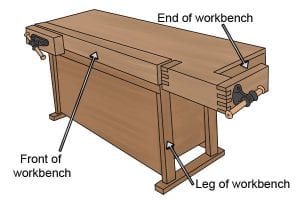
Workbench vices are categorised by where on a woodworking bench they are positioned.
Face Vices
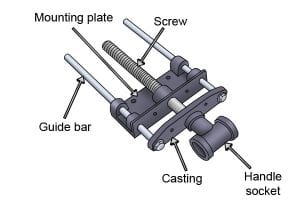
A face vice can also be called a front vice, as it takes position at the front of a workbench. Its mechanical apparatus consists of a mounting plate which bolts to the workbench, a threaded screw, a handle socket, machined guide bars and a pair of heavy-duty castings where the wooden jaws will be placed.
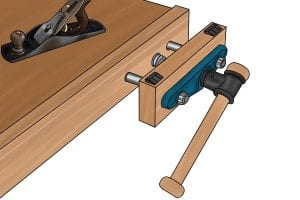
A face vice is usually mounted at one side of the front edge of a workbench. Right-handed users usually position a face vice at the far left of a workbench, whereas left-handed users will position a face vice at the far right. This allows the user to move around the vice into various positions while working on an object.
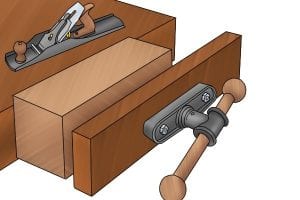
The construction of a face vice means the edge of the workbench provides the back clamping jaw, as the back casting is built into or behind the wooden edge of the bench. A wooden front jaw is then built to fit the front casting, which works as the sliding jaw. This jaw is opened and closed when the handle is rotated. When closed, the jaw works in conjunction with the workbench edge to clamp objects stationary.
Tail Vices
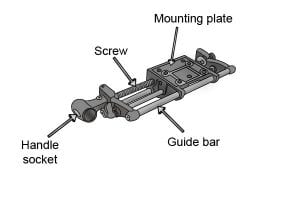
A face vice can also be called a front vice, as it takes position at the front of a workbench. Its mechanical apparatus consists of a mounting plate which bolts to the workbench, a threaded screw, a handle socket, machined guide bars and a pair of heavy-duty castings where the wooden jaws will be placed.
A face vice is usually mounted at one side of the front edge of a workbench.
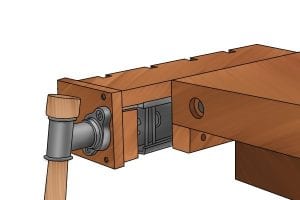
Right-handed users usually position a face vice at the far left of a workbench, whereas left-handed users will position a face vice at the far right. This allows the user to move around the vice into various positions while working on an object.
The construction of a face vice means the edge of the workbench provides the back clamping jaw, as the back casting is built into or behind the wooden edge of the bench.
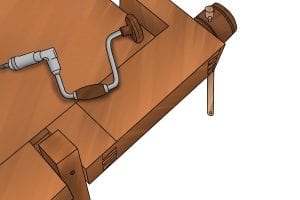
A wooden front jaw is then built to fit the front casting, which works as the sliding jaw.
This jaw is opened and closed when the handle is rotated. When closed, the jaw works in conjunction with the workbench edge to clamp objects stationary.
Leg Vices
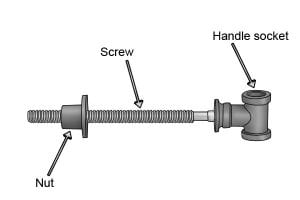
A leg vice, as the name suggests, is positioned on the leg of a workbench. The mechanical apparatus of a leg vice is usually simple, consisting of just a long threaded screw, a handle socket, and a nut. It is called a leg vice due to the fact that one of the bench’s legs forms an integral part of the vice itself by forming the stationary jaw.
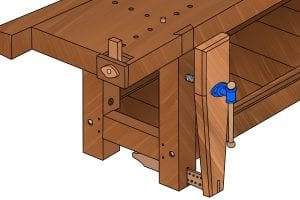
A wooden front jaw is then custom-built to form the part of the sliding jaw. The jaw is then opened and closed by rotating the handle. Similarly to a face vice, the sliding jaw works in conjunction with the workbench edge to clamp objects stationary.
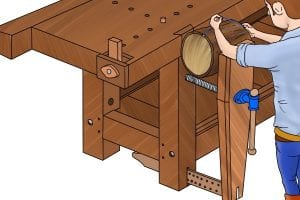
This vice can offer a great amount of clamping force due to its large surface area. Its height means it is ideal for holding large and heavy workpieces. For example wooden doors, beams or tree trunks.
What Type Of Workbench Vice Should You Choose?
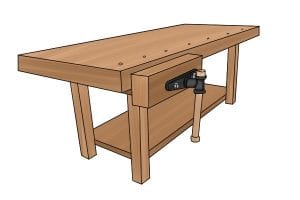
The type of workbench vice you purchase primarily depends on the type of application you wish to complete. Due to its position on the workbench, a face vice allows you to work in multiple positions around the clamped workpiece.
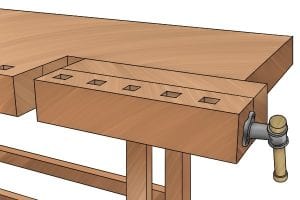
It is also the ideal vice to choose when you wish to hold objects horizontally for sawing, planing, dovetailing, etc., as the width of the jaws means the vice can withstand heavy-duty pressure. A tail vice is typically used in conjunction with bench dogs for clamping workpieces horizontally across the surface of the workbench.
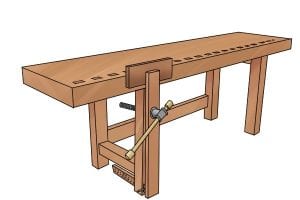
This type of vice is ideal when wishing to hold very large workpieces for planing or carving, however, it does then limit the user’s bench space. Finally, a leg vice is ideal for holding particularly long or heavy pieces of wood. The only major disadvantage to consider is that you may have to stoop when working on a workpiece, as the vice is positioned lower down on the workbench than the other types.






